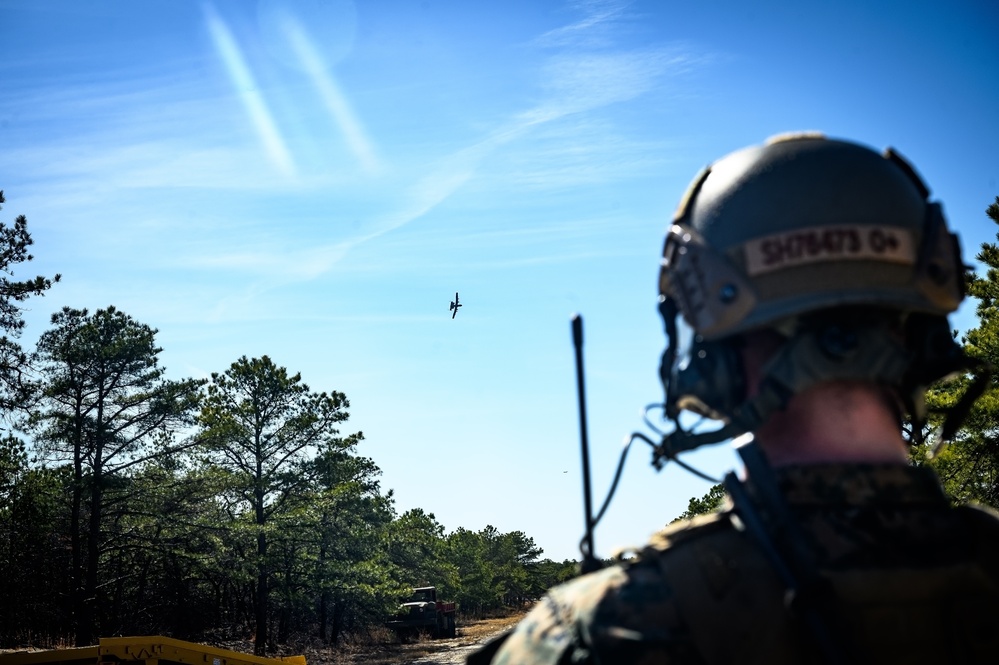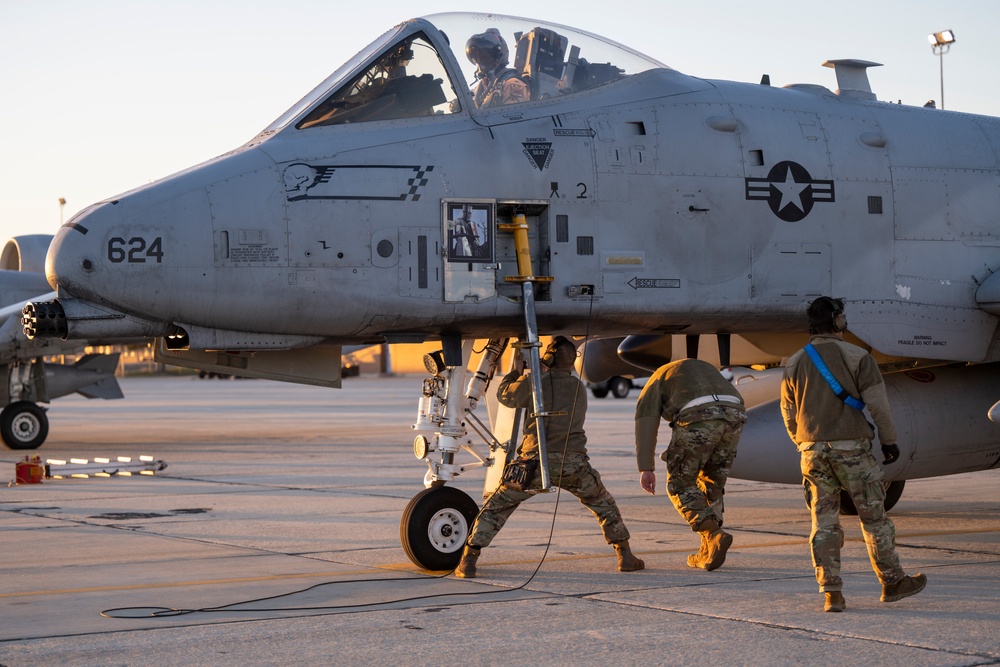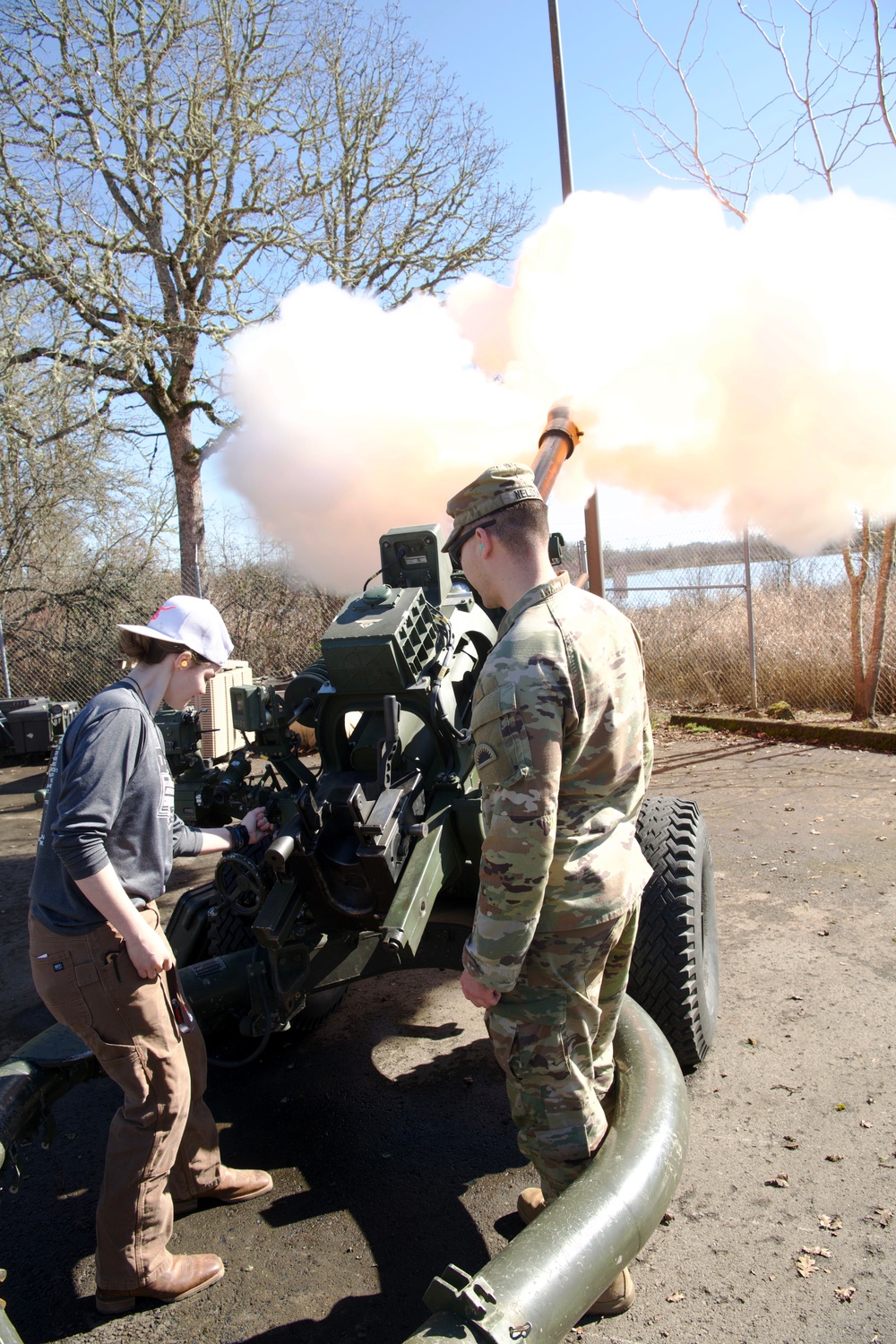DVIDS – News – USMC conducts joint close air support exercise
JOINT BASE MCGUIRE-DIX-LAKEHURST, N.J. — Marines assigned to the 1st Battalion, 25th Marine Regiment, 4th Marine Division, conducted a close air support exercise, March 11-15, 2025, at Joint Base McGuire-Dix-Lakehurst, New Jersey.
The CASEX training event focused on enhancing the integration and proficiency of Marines in coordinating with air assets for close air support missions. This was achieved through integration of joint terminal attack controllers and U.S. Air Force A-10 Thunderbolt II Pilots from the Maryland Air National Guard’s 175th Wing, 104th Fighter Squadron, along with aircrews from HMLA 773, Marine Aircraft Group 49 located at JB MDL.
JTAC teams provide operating forces with highly trained personnel capable of executing close air support during both combat and contingency operations. Ground combat arms military occupational specialties such as artillery and infantry can earn the additional MOS of JTAC while aviators earn the additional MOS of forward air controller. The teams also include enlisted Marines who earn the additional MOS of joint fires observer.
“The need for JTAC-qualified Marines is currently very high, especially in the Marine Forces Reserve,” said U.S. Marine Corps Maj. Sanford Bennett, 1st Battalion, 25th Marine Regiment, 4th Marine Division JTAC evaluator.
“A JTAC is an individual, usually from a combat arms background, responsible for coordinating, integrating and directing combat aircraft engaged in close air support and other offensive air operations.”
Bennett facilitated the training to prepare several Marines for recertification in addition to refining core competencies. Upon graduation from the schoolhouse, JTAC-certified personnel are expected to qualify for recertification at certain intervals, ranging from six to 18 months depending on their role and level of experience.
“The courses to become a part of the JTAC community are extremely rigorous,” Bennett said. “There is a significant knowledge base required going in and the evaluations once there continue to be carried out to the highest standard. That being said, we empower Marines by giving them that foundational knowledge and then refine their technical and equipment skills for success in the field.”
The primer course aims to prepare Marines for formal schooling, enhancing the Reserve component’s readiness to augment and reinforce the Active component when required. A qualified and current JTAC is recognized across the Department of Defense as authorized to perform terminal attack control, even with assets belonging to other services or partner nations.
Formal JTAC training for USMC students consists of a five-week hands-on course at the Expeditionary Warfare Training Group Pacific or Atlantic.
Once in the field, a JTAC serves as an unparalleled force multiplier from the ground, orchestrating a symphony of destruction across all theaters of war.
“An infantryman on the ground with a rifle, a mortar or another small weapon can only affect what they can see and what they can shoot,” said USMC Sgt. Jacob Butler, 25th Marine Regiment, 4th Marine Division JTAC instructor.. “But a JTAC calling in air strikes with a radio is considerably more lethal on the battlefield.”
Bennett echoed Butler’s sentiments, but also made a point to acknowledge and reaffirm the vital role of infantrymen on the battlefield.
“Infantrymen have a very important job and I don’t want to take anything away from that, as JTACs we simply augment, support, and enhance their lethality,” Bennet said. “We can assist operations such as beach clearing to set conditions for infantrymen to advance. They won’t advance until we have completely cleared everything on a beachhead by means of air or naval gunfire.”
The way that wars are waged continues to change and evolve at record pace; causing some to question why programs such as these should continue to be funded in the age of cyber and information warfare, said Bennet.
“Land, air, and sea will always be domains of warfare, and we as JTACs can shape and control those battlefields, but you need the right training in order to do that,” Bennet said. “Just being ‘bare minimum’ is not enough, you can very easily risk your own troops with friendly fire if you do something wrong. Calling in a strike or dropping a bomb always carries inherent risks, so being highly proficient—not just barely competent—is absolutely critical when lives are at stake.”
| Date Taken: | 03.26.2025 |
| Date Posted: | 03.27.2025 09:49 |
| Story ID: | 493840 |
| Location: | NEW JERSEY, US |
| Web Views: | 0 |
| Downloads: | 0 |
PUBLIC DOMAIN
This work, USMC conducts joint close air support exercise, by SrA Matt Porter, identified by DVIDS, must comply with the restrictions shown on https://www.dvidshub.net/about/copyright.


 Private Internet Access gives you unparalleled access to thousands
of next-gen servers in over 83 countries and each US state. Your
VPN experience will always be fast, smooth, and reliable.
Private Internet Access gives you unparalleled access to thousands
of next-gen servers in over 83 countries and each US state. Your
VPN experience will always be fast, smooth, and reliable.
